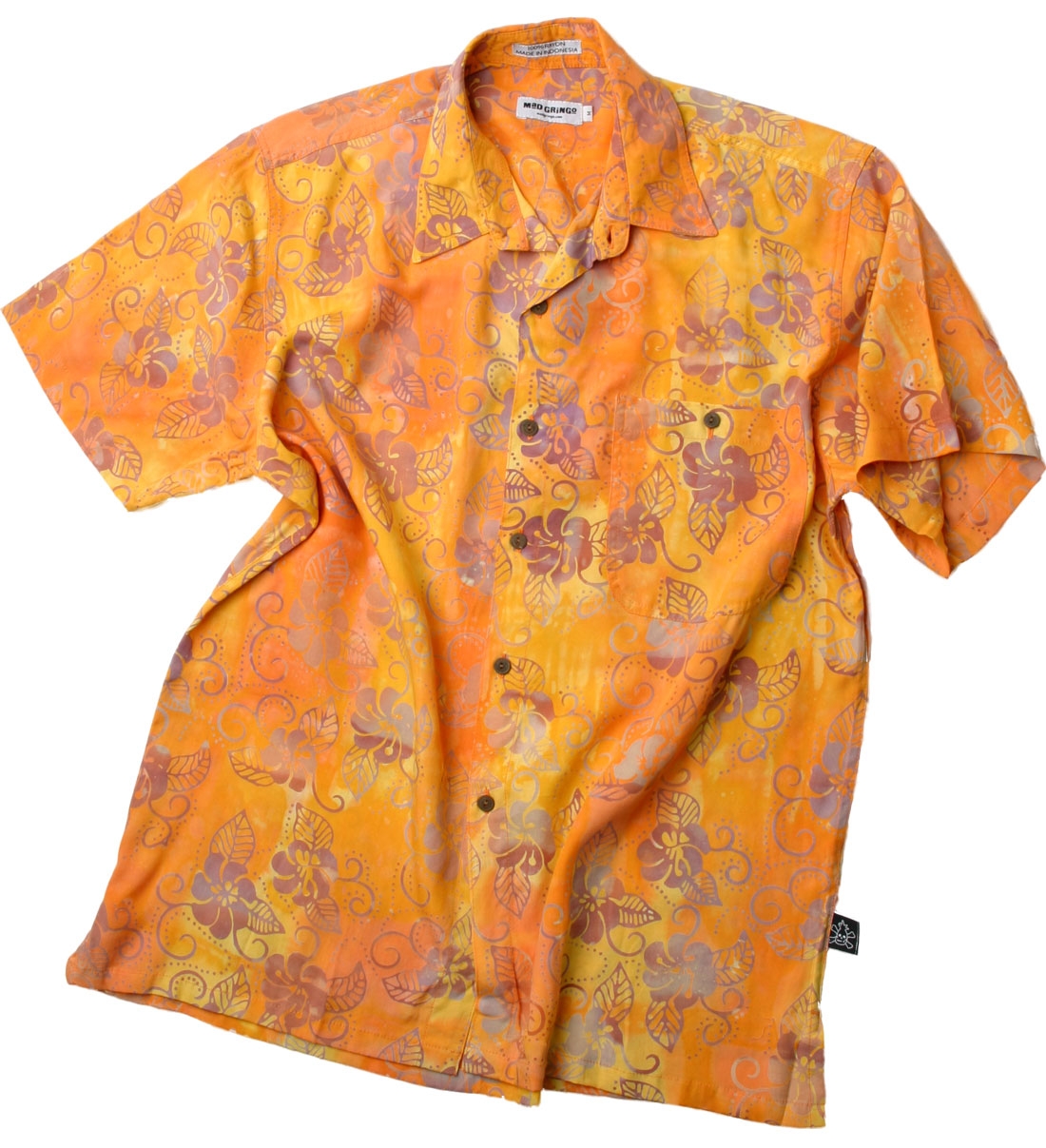What a Tropical Shirt Can Tell Us About Value
What a Tropical Shirt Can Tell Us About Value
I had a great discussion last week about selling to “value”. One of my favorite analogies was put to use. The price and value of a Ralph Lauren 100% Viscose orange tropical shirt versus the old Mad Gringo 100% Rayon orange tropical shirt.
Game on.
A little background first, I used to run a tiny tropical shirt company that had aspirations to be a big leisure brand in its adulthood. As part of that process, I learned a lot about how things like tropical shirts are made. The fabric, patterns and construction. The tropical shirt aficionados would tell you things like “real coconut buttons, matching front placket and good cotton”. I spent a lot of time trying to identify all the parts of what makes a tropical shirt great because if the shirt was great, people would pay more for it, right?
An early lesson in that business was that there was something beyond the construction of a tropical shirt that accounted for its pricing. I found garments that were rock solid, well built and yet were priced under $20. Other garments were priced at $90 and may have looked a little better, but they didn’t seem to constructed any better. I mean, the spread between a beautiful tropical shirt and an ugly tropical shirt isn’t very big.
Then I bumped into this:

Yes, a Ralph Lauren Polo brand tropical shirt. I ran it through my mini check list. It had a great print and real coconut buttons, but the front placket wasn’t an exact match and the pocket didn’t match the pattern either. It was “viscose” which is a fancy way of referring to rayon, a “poor man’s silk.” It was made in the Philippines and I could pretty much ballpark what went into the shirt just by looking at it.
The retail price? $115.
What?!? It was missing parts of a great tropical shirt. Why would someone pay 2-3X more for it?
This story is one of the analogies I use when talking to your team about Value. The definition of value is “relative worth, utility, or importance” and the key word is Relative. It’s all relative.
Knowing what I knew, that shirt didn’t have any extra value to warrant paying $115. To me. The relative value of the object was much less. But my value equation is subject to change.
For instance, if I found myself calling a client in New York city that invited me to her house in the Hamptons for that weekend. I would have to go shopping for a fun weekend shirt and if I saw this garment, my value equation may have changed. I could hear myself thinking something like “when I’m swimming and my shirt is lying off to the side, that little label might say ‘hey, despite the questionable orangeness of his shirt, he must have good taste and that’s why I hired him’ so I should just fork over the extra cash now. I don’t have time to continue shopping.”
What happened there? The object’s relative value jumped up a notch.
In marketing professional services, we spend a lot of time thinking about our billable hours and the fees we charge. We’re guessing at the value we provide clients and trying to make sure it’s well in excess of our final bill. We’re asking the client to make that calculation each time they want to use our services.
Time to stop guessing. To best serve your clients you need to quantify their relative value and use that as your guide. Our solution’s value is tied to the pain or gain in our customer’s problem. It’s their judgement of worth that we need to be focused on.
***
This was one of my tropical shirts. The Mango Madness.

You’ll notice that it doesn’t have a matching placket, perfectly matching pocket and it’s not made of cotton. Despite that, it was expertly constructed by loving hands in Bali, Indonesia and those bright colors were kissed by the sun in an ancient dying process used on that island. It retailed for $49 and came with its own set of instructions and a little beach sand from my trip to the “Ring of Fire.”
You could buy 2 of mine for the price of the Polo shirt, but that didn’t matter.
Share the tropical shirt tale when a member of your team is about to sit with a client. Your firm’s value is going to be tied up in her relative view of the worth, utility and importance you bring. That comes from more than just your hourly rate.
Good stuff.
About the Author: Greg Chambers is Chambers Pivot Industries. Get more business development ideas from Greg on Twitter.
